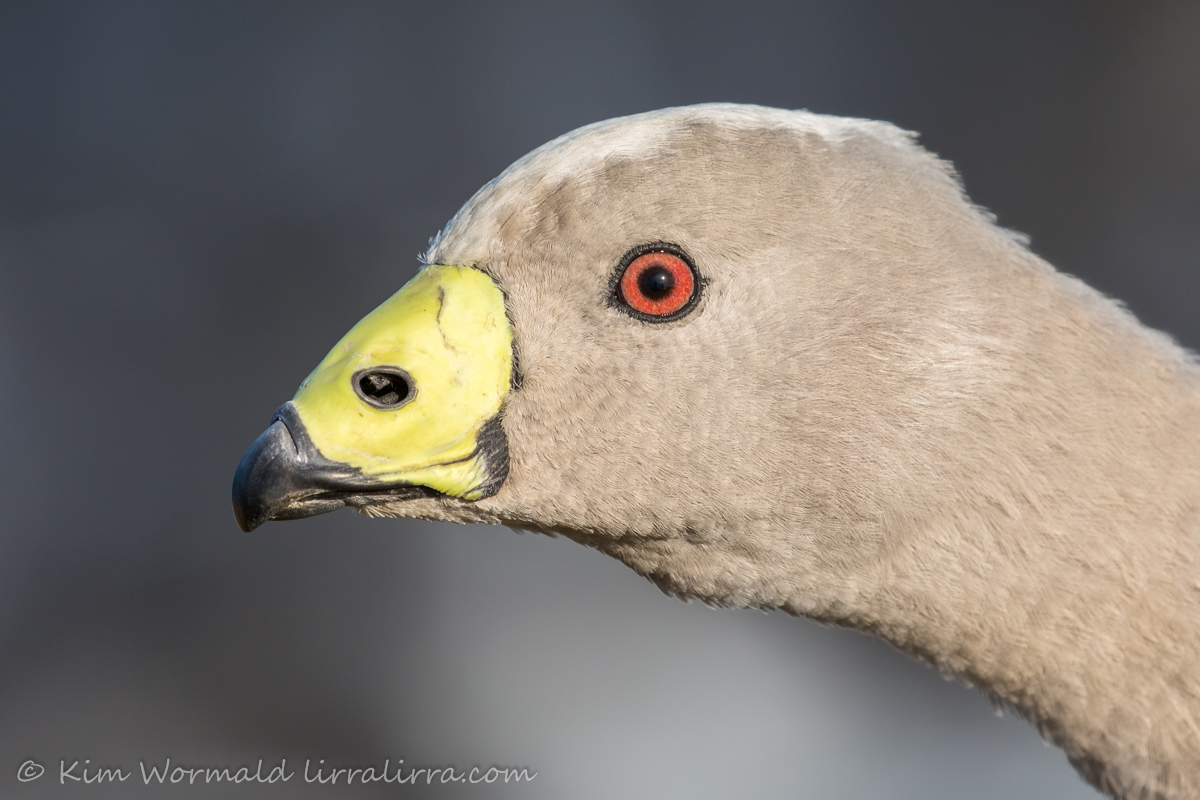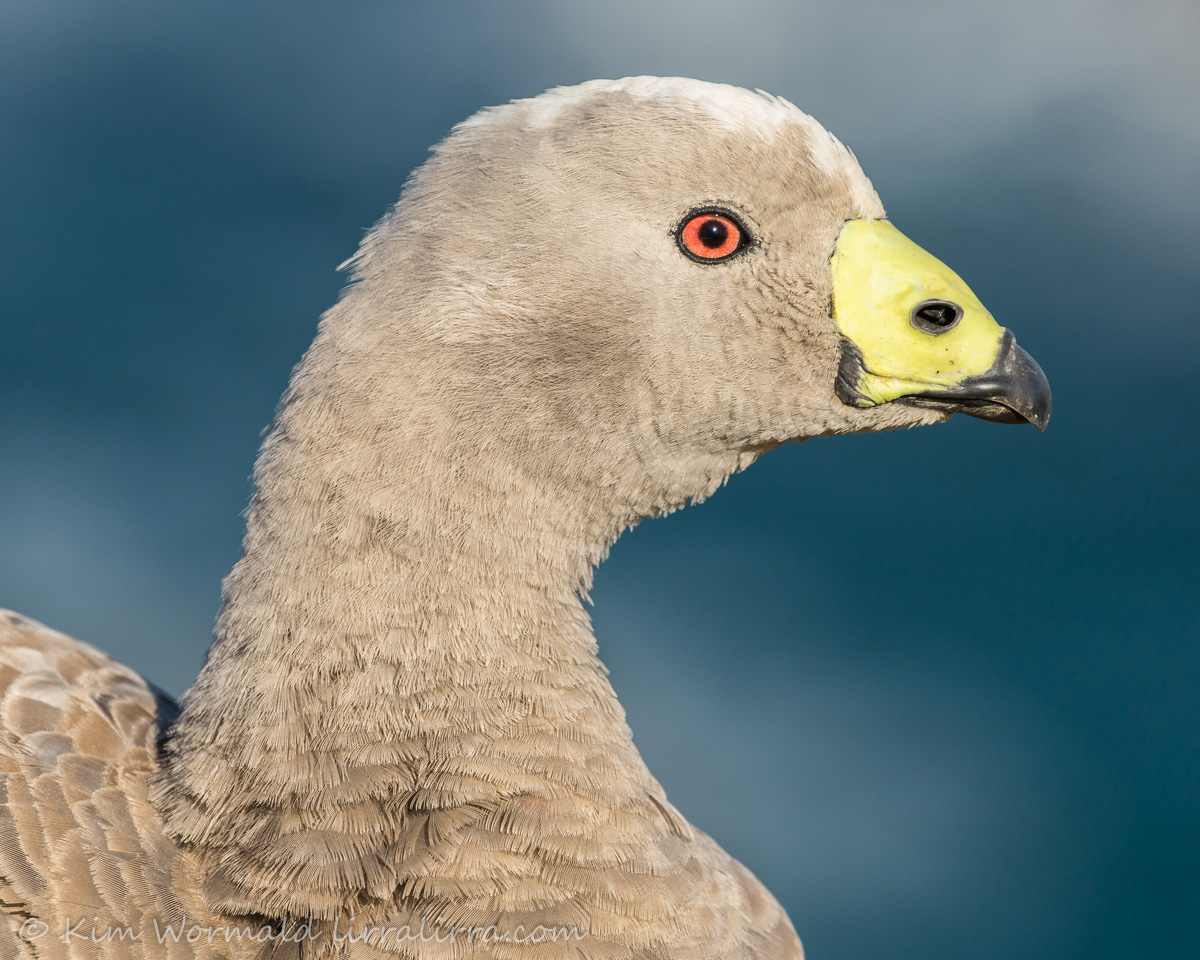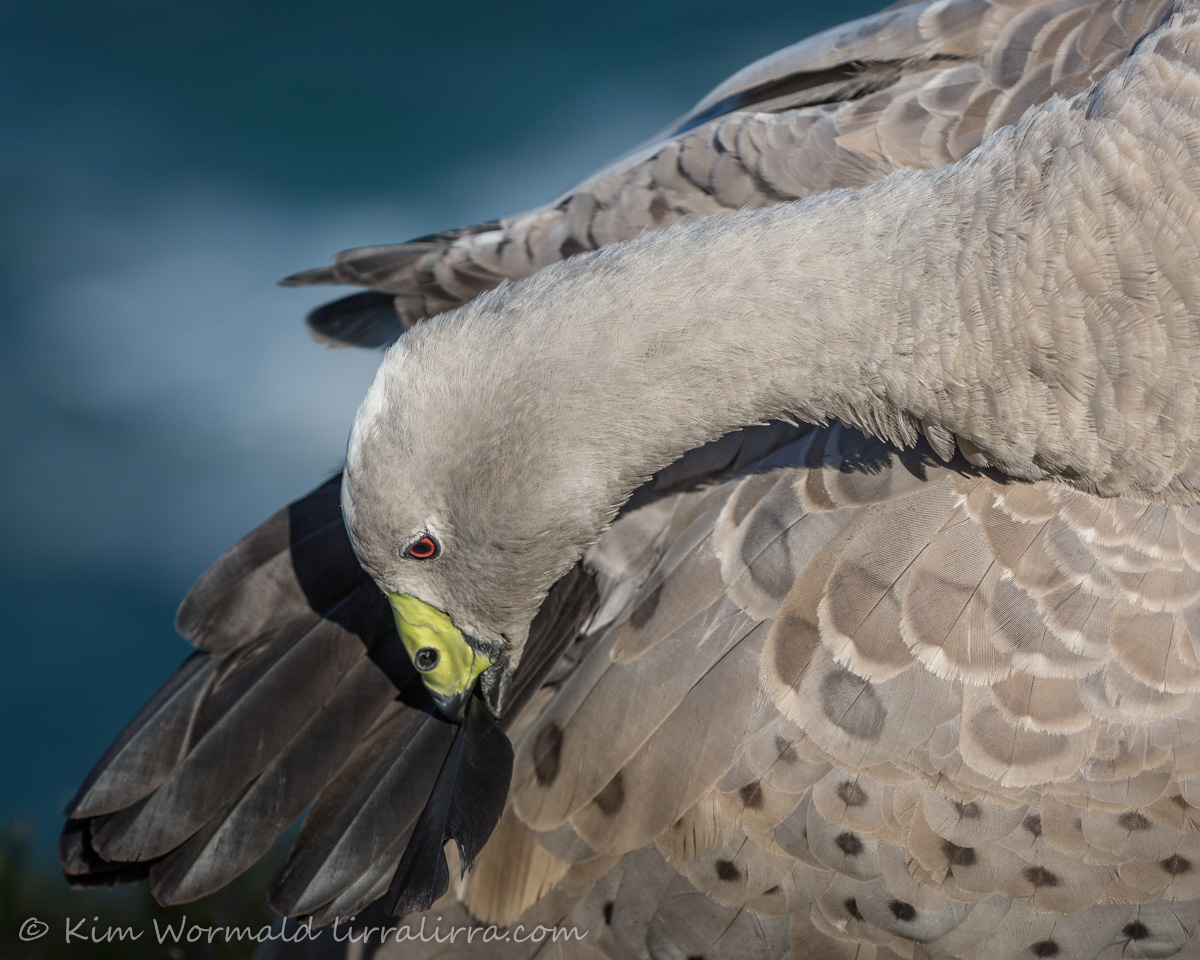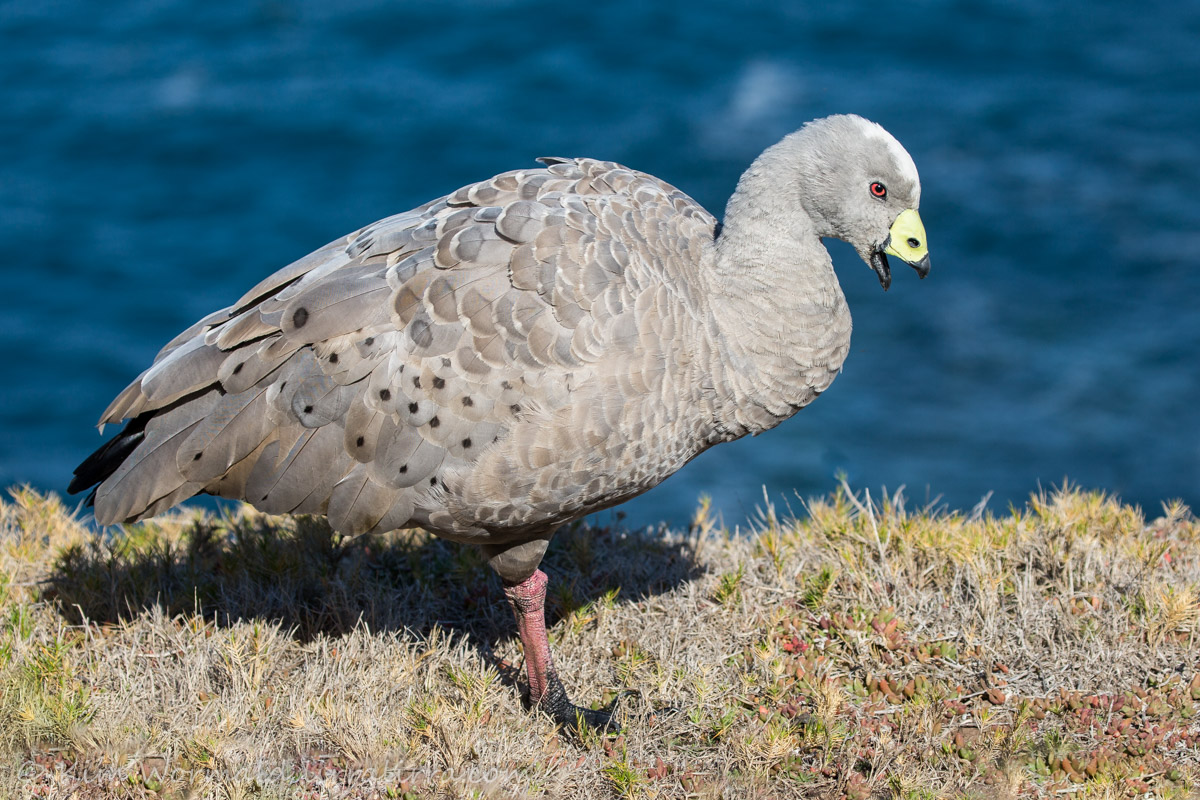The backgrounds in this week’s images may look like rather odd skies but they are actually the ocean, about 25 metres beneath a clifftop.
 Cape Barren Goose – (Cereopsis novaehollandiae)
Cape Barren Goose – (Cereopsis novaehollandiae)
Canon 5DIII, Canon 100-400L IS II USM, 1/800, f/6.3, ISO 200, focal length 400mm
A pair of Cape Barren Geese were pottering around beneath a small timber lookout on a Phillip Island track. They rested for a while, then pottered and preened and grazed on the grasses and Berry Saltbush. The blurred background in the image above looks like storm clouds but is the distant ocean crashing again rocks.
Cape Barren Geese are wonderful birds and it’s great that they were brought back from the brink of extinction. Getting the exposure right on their white heads is always a challenge so I’m happy that there is detail in the whites.
 Cape Barren Goose – (Cereopsis novaehollandiae)
Cape Barren Goose – (Cereopsis novaehollandiae)
Canon 5DIII, Canon 100-400L IS II USM, 1/800, f/7.1, ISO 200, focal length 312mm
Cape Barren Geese look amazing with their red eyes, yellow-green ceres and finely fringed feathers that remind me of a craft activity I used to do with children where we folded grey crepe paper into strips and fringed it to decorate cut outs of koalas. Male Cape Barren Geese are slightly larger than females, they mate for life and breed on offshore islands in south east Australia and in lesser numbers off the south coast of Western Australia.
The colour of the ocean in the image above looks gorgeous, but if someone assumed it was the sky they’d think I’d fiddled about with hues and saturation.
 Cape Barren Goose – (Cereopsis novaehollandiae)
Cape Barren Goose – (Cereopsis novaehollandiae)
Canon 5DIII, Canon 100-400L IS II USM, 1/800, f/7.1, ISO 200, focal length 248mm
The preening image above shows how close the geese were to the edge of the cliff; there is saltbush in the bottom left-hand corner (if you look closely) and the rest of the background is ocean complete with breaking waves. Birds do a great job of looking after their feathers, careful preening is essential. I like the brown splodges and dark spots on their feathers, so pretty.
 Cape Barren Goose – (Cereopsis novaehollandiae)
Cape Barren Goose – (Cereopsis novaehollandiae)
Canon 5DIII, Canon 100-400L IS II USM, 1/800, f/6.3, ISO 200, focal length 142mm
I’ve included this image to put the others in context and to show a whole bird including its handsome reddish-pink legs. Their call is a grunt-like honk, but images that look as though a bird is calling can sometimes be a bird yawning.
Taking images on this clifftop was very different to the dramatic drop of 200 metres at Malabar Hill. Images of tropicbirds in flight can be seen at Lord Howe Island Tropicbirds along with images taken by David Burren of me standing much closer to the edge of the cliff than looks sensible.
Happy birding, Kim
~ Thank you for visiting and commenting
~ If you would like a weekly email letting you know that lirralirra has been updated please use the ‘subscribe’ box above right

Wonderful shots! I love the contrast with the dramatic blues of the background. It was good to have a context shot to show how close they were standing!
I’m glad you found the context shot useful. Where they were standing reminded me of Plop the barn owl who was afraid of the dark and made me think it’s time for another book to be written: Gilly the goose who was afraid of heights.
Hi Kim !
Superb, a real atypical beak.
Well done and one more time thank you for your beautiful pictures.
Alain from France.
Hi Alain, it is a bizarre beak, so stubby. You’ve made me wonder if there is another bird with a similar bill.
Love these images and that lovely ocean color is a perfect background and shows you had a lovely day to take photos! What absolutely interesting and cool looking geese – I still sit in awe of the variety of birds you get to see!
We really are lucky with the birds here. I’m glad you like the images
Very nice! A lot of information about the color, pattern, size and placement of feathers for the genes to encode.
That is so true! And so brilliantly fascinating to think about.
These are lovely. Ive never seen these sort of birds before. I was wondering now that you have the 7DII as well as the 5DIII what camera do you find yourself using the most. Julie
Some live on the southern coast of WA but I’d guess they are rarely seen by anyone. I use the 5DIII far more often. The 7DII has just come back from Canon and I’m waiting for some decent light to take some test shots. They re-aligned the mirror so hopefully the image IQ will improve. How about you Julie?
no issues with mine, use it with the Tamron 150-600. had to micro adjust the lens to it but pretty. great in decent light. anything really dull and dark I use the 5DIII. most of my bird shots lately have been with the 7DII
That’s good Julie, it’d be great to be happy with both. There was something wrong with mine from the beginning, it was (and is) calibrated but that didn’t help, hopefully it’s been fixed. It’ll take me a while to trust it after missing out on images from major trips but I’m looking forward to some good light.
Thanks Kim for all the time and effort you put into this site. I always look forward to your posts, and although I do not comment, I love reading your detailed passionate comments and viewing your amazingly sharp and detailed images.
Your time is appreciated.
best wishes
Marilyn
Marilyn, your comment is appreciated more than you could realise, thank you, Kim
Bonjour,
Magnifiques portraits.
Je n’ai eu la chance de rencontrer le Céréopse cendré qu’en réserves et c’est un très bel oiseau.
Splendide plumage.
Bonne journée
Pascale, that’s awesome that you had the chance to see Cape Barren Geese! Now you’ve got me wondering where they were.
Proof positive that ‘red-eye’ is not always a photographic blunder.
They are beautiful birds. I loved this whole series but went back again and again to the details of the preening bird. Amazing.
Thank you – as always.
Funny about ‘red-eye’, makes me wonder how red-eye reduction software would cope with it.
Oh WOW! Your photos and your blog are just so FANTASTC!!! I do LOVE your work
Thank you so much Gwen
Fantastic blog as usual Kim. Thanks for sharing these gorgeous birds.
Your photography is out of this world.
Thank you Evie, much appreciated. I’m looking forward to your next blog post.
I love cape barren geese they look so prehistoric! I heard about the red winged kites(I think that’s the right name) in Wales that went down to 20 birds and were brought back from extension by one man. The birds were considered pests to farmers and had a bounty on carcasses but now they are protected. Made me think of the geese!
I’m glad you like the geese. I did some research on Red Kites, they are stunningly beautiful. It was great to read about the locals who got together and fought for the survival of the species. Awesome, thank you.